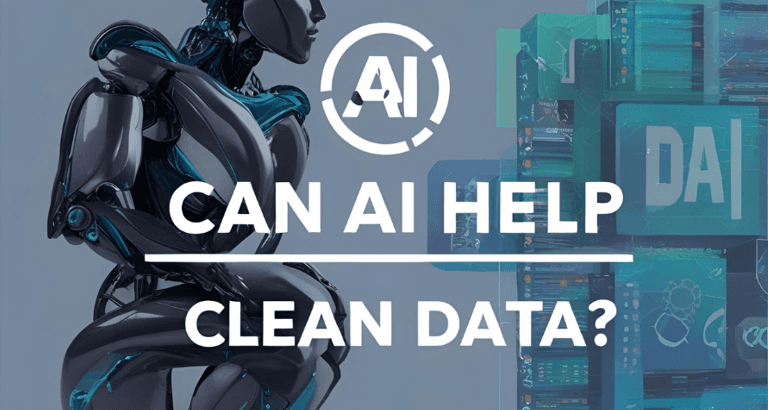Data Insights
AI - Business Benefits Explained
This article has been written by our guest expert, Graham Roberts from Full Stack Consulting , who assists clients with transforming their business to accelerate their growth.. AI is creating value for businesses right now. Some businesses still don't kno


This article has been written by our guest expert, Graham Roberts from Full Stack Consulting, who assists clients with transforming their business to accelerate their growth..
AI is creating value for businesses right now.
Some businesses still don't know where to begin with AI while others have figured out how to deliver an awful lot more with a whole lot less. In 2023 the Institute of Chartered Accountants in England and Wales wrote that:
"Investment in technology also offers some of the greatest potential to improve productivity...Companies, not just those in the UK, are finding it very hard to use the new digital technologies. And it seems to be only very productive companies, large companies, or new start-ups in technology areas that can use these tools. As a result, the most productive companies are pulling further and further ahead of the rest. The top 5% or so are seeing big productivity gains, and big differentials are opening up within sectors of the economy."
The acceleration of AI advancements is increasing the gap between those who consistently drive productivity gains through new technologies and those who struggle to integrate new technologies.
All of this begs the question, how do you get your business into the top 5% of businesses and integrate AI into your processes to pull away from your competitors?
Generative AI
In 2022 generative AI tools such as ChatGPT and DALL-E 2 hit the market. The capability was mindblowing and the examples created by the consumer market demonstrated that this technology would be a game changer. It didn't take long for this consumer driven hype to catch the eye of business leaders looking for new ways to drive efficiencies in their businesses.
We have had a solid couple of years now of businesses figuring out how to create value from generative AI technologies. Some of the most common are co-pilots that can help write emails, or create marketing collateral, or write code, or generate video, or transcribe meeting notes and on and on.
This has helped businesses to reduce the time they spend completing mundane work. Some businesses use these efficiencies to reduce headcount, while others use them to reassign teams to higher value tasks that create more value for the business.
There are challenges around access to data, data protection, copyright and even accuracy. However, if you're not finding ways to manage and mitigate those risks in order to integrate these tools into your workflows, you risk being in the 95% who are slipping behind.
Consider the adoption of generative AI tools and co-pilots as table stakes for playing the modern game of business.
Process Automation
LLMs (Large Language Models) are the fundamental technology that underpin generative AI tools. It didn't take long for the likes of OpenAI, Google, Anthropic to offer access to their LLMs via APIs. This API access allows software developers to create novel applications that can interact with those language models.
This creates the opportunity to go beyond generating text, images, videos and audio and instead executing tasks by understanding free form text, or images, audio and video for that matter. This is the key to unlocking end to end automation of complex tasks.
Imagine what difference this can make to businesses that receive a high volume of unstructured data that they need to extract details from, analyse and then execute a task.
Recruitment companies are a good example. They receive thousands of CVs, all formatted differently, containing different data points written in different styles. Manually processing CVs and adding the data to a database is incredibly time consuming at scale. With integrated LLMs the process can be automated and enhanced.
Insurance companies might use visual query analysis to assess damage from a car crash by automatically inspecting photos and then cross referencing the damage with facts submitted elsewhere on a claim to detect inconsistencies or to classify the claim for onward processing.
The bottom line is that the technology is available to enable software to understand written, spoken and visual inputs. Key facts can be extracted from those inputs. Themes or topics can be detected across entire datasets. Outputs can be produced that summarise, enrich and analyse those inputs. All automatically.
It is often reported that AI is not 100% accurate, but that can miss the point because neither are humans. Right now businesses are automating processes that AI can complete faster and more accurately, from invoice processing to customer onboarding and much more.
The ability of language models to understand context, semantics and sentiment gives them an advantage over humans in being able to analyse large datasets to identify topical patterns that humans might struggle to detect at scale. This can be invaluable in areas such as responding at pace to customer feedback and making informed decisions.
AI Agents
Automation has been around for donkey's years, but in 2025 it is going to get turbo powered by AI Agents.
On the face of it, AI Agents are just plain old automation orchestrating three fundamental tasks:
1. Fetching or handling inputs2. Applying logic3. Creating outputs and sending them somewhere
However, the LLM changes everything.
No longer are our automated processes limited to handling structured data that conforms to a schema we have designed in advance.
No longer are our workflows rigid, based on pre-defined logic branching.
With AI Agents automated processes can understand the meaning of the inputs they receive, even when the inputs are unstructured. They can also understand the context in which that data is received, for example the input might be a customer support request, the context might be driven by all of the product documentation relevant to what the customer has purchased along with any commercial guidelines that exist for handling support queries.
Given this level of understanding and the ability to interact with humans (or other AI Agents!) the AI Agent is able to agree a course of action and take the steps necessary to execute that course of action, for example, initiating the sending out of a replacement part to a customer by updating the necessary systems to send the instruction to the warehouse.
Businesses who succeed in integrating AI Agents into their core processes will stand apart from their competitors by enjoying superior customer satisfaction and enhanced efficiencies.
Next Steps
This future sounds exciting, but how do you get there?
Get started: Start experimenting, play with generative AI tools, start upskilling your team, understand the limitations as well as the capabilities.
Identify opportunities: Analyse your business processes and identify areas where AI is appropriate with potential to add significant value.
Integrated data: AI is most powerful when paired with integrated systems containing clean, reliable data
Manage risks: It's a new way of working. Understand concerns around data security, privacy, copyright, discrimination and accuracy.
Have a plan: Work out what you're going to do, why you're going to do it, how you're going to do it, who you're going to do it and which metrics you'll use to track success. Failing to plan is planning to fail.
By taking these steps, businesses of all sizes can unlock the transformative power of AI and thrive in the age of intelligent automation.
If you're not sure how to create value from AI in your business, join my SME Growth Cohort. We meet online every Wednesday to talk about adopting modern technologies to accelerate business growth. Use referral code "PTR" to reserve your spot for free.
Graham RobertsFull Stack Consultinghttps://fullstackconsulting.co.uk/
Share This Post
Ian Roberts
Technical Director
Ian is an incredibly talented solutions architect. He has over 15 years of experience working with data, as part of a broader IT career spanning over 20 years.
Frequently Asked Questions
Couldn’t find the answer you were looking for? Feel free to reach out to us! Our team of experts is here to help.
Contact Us


